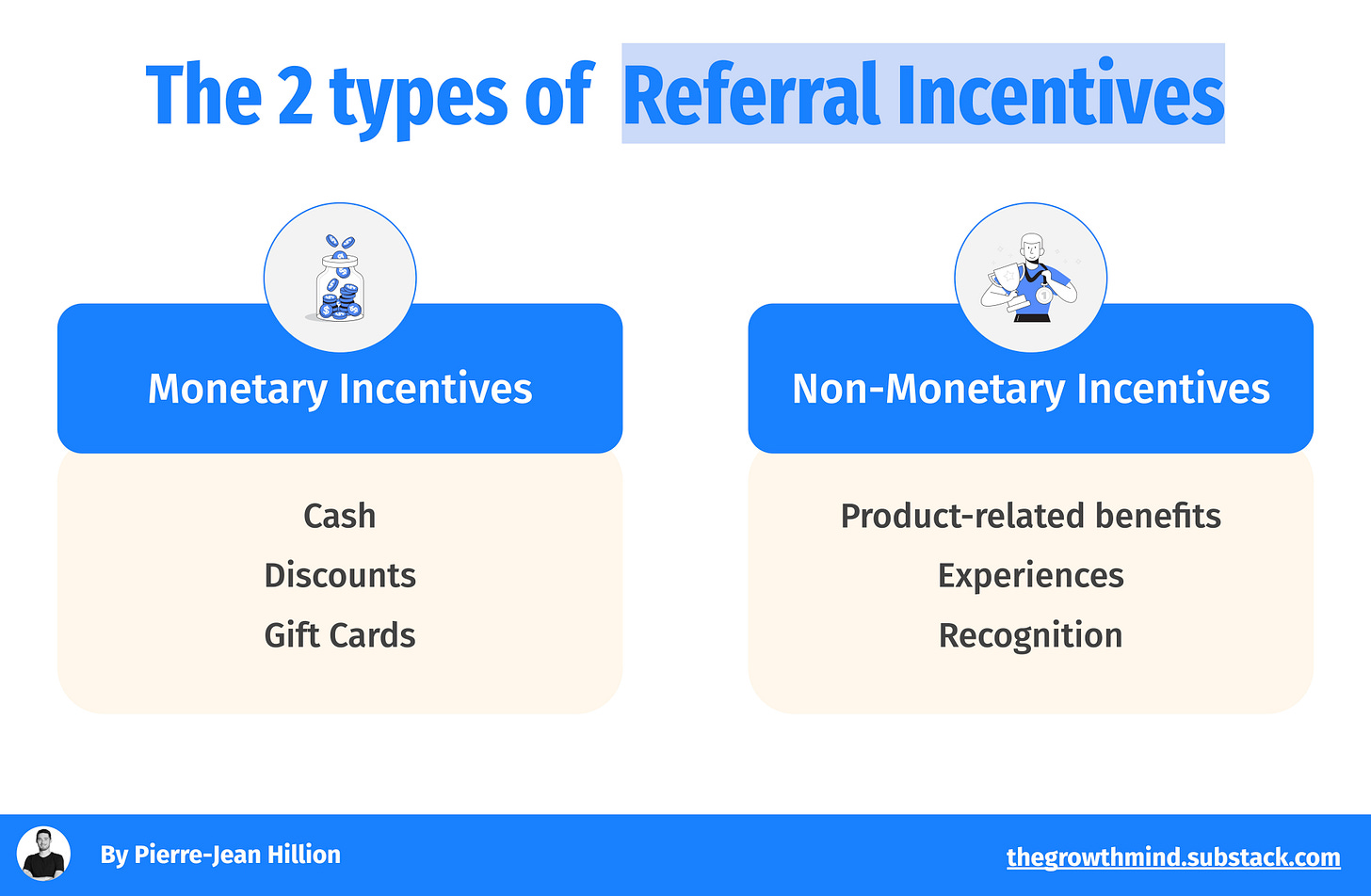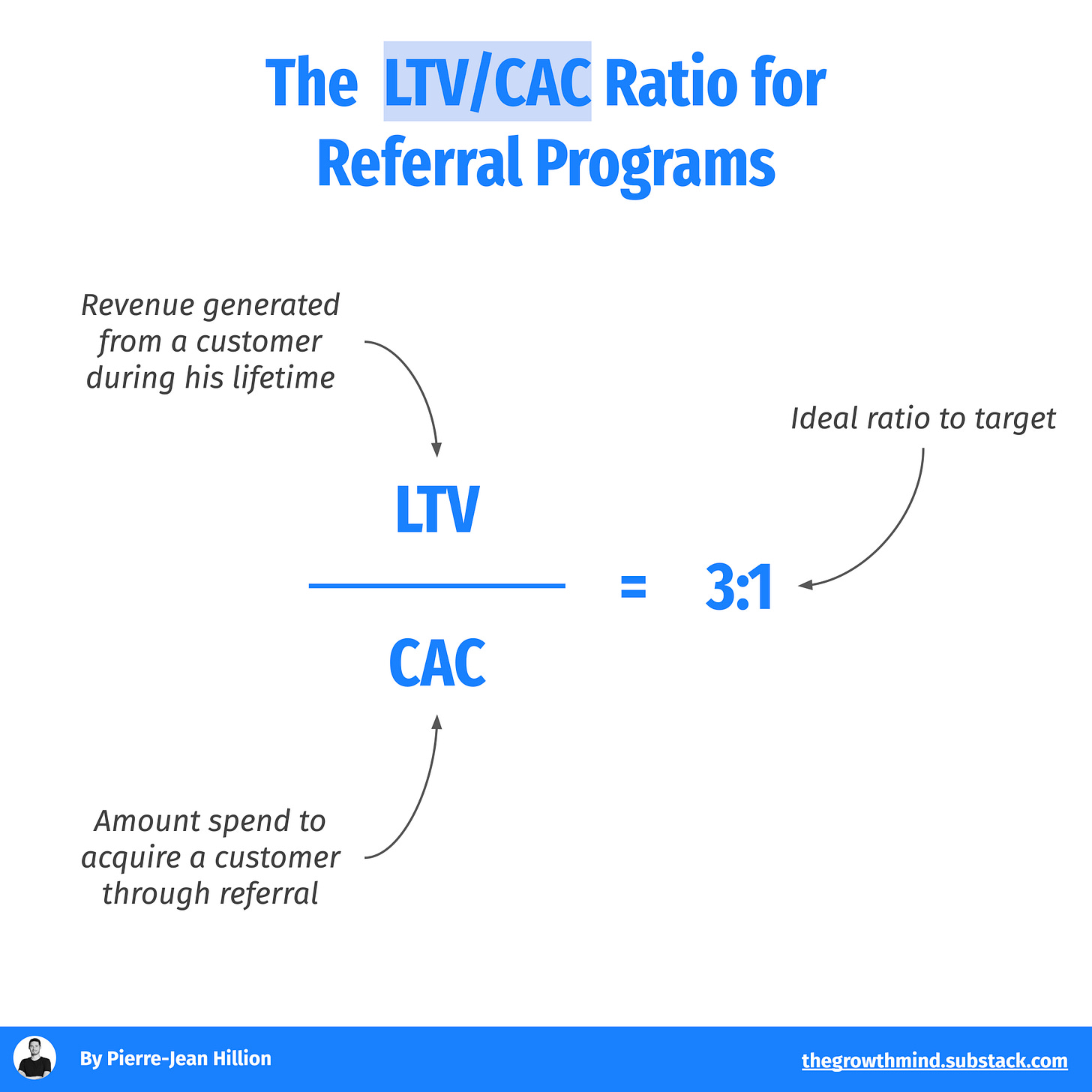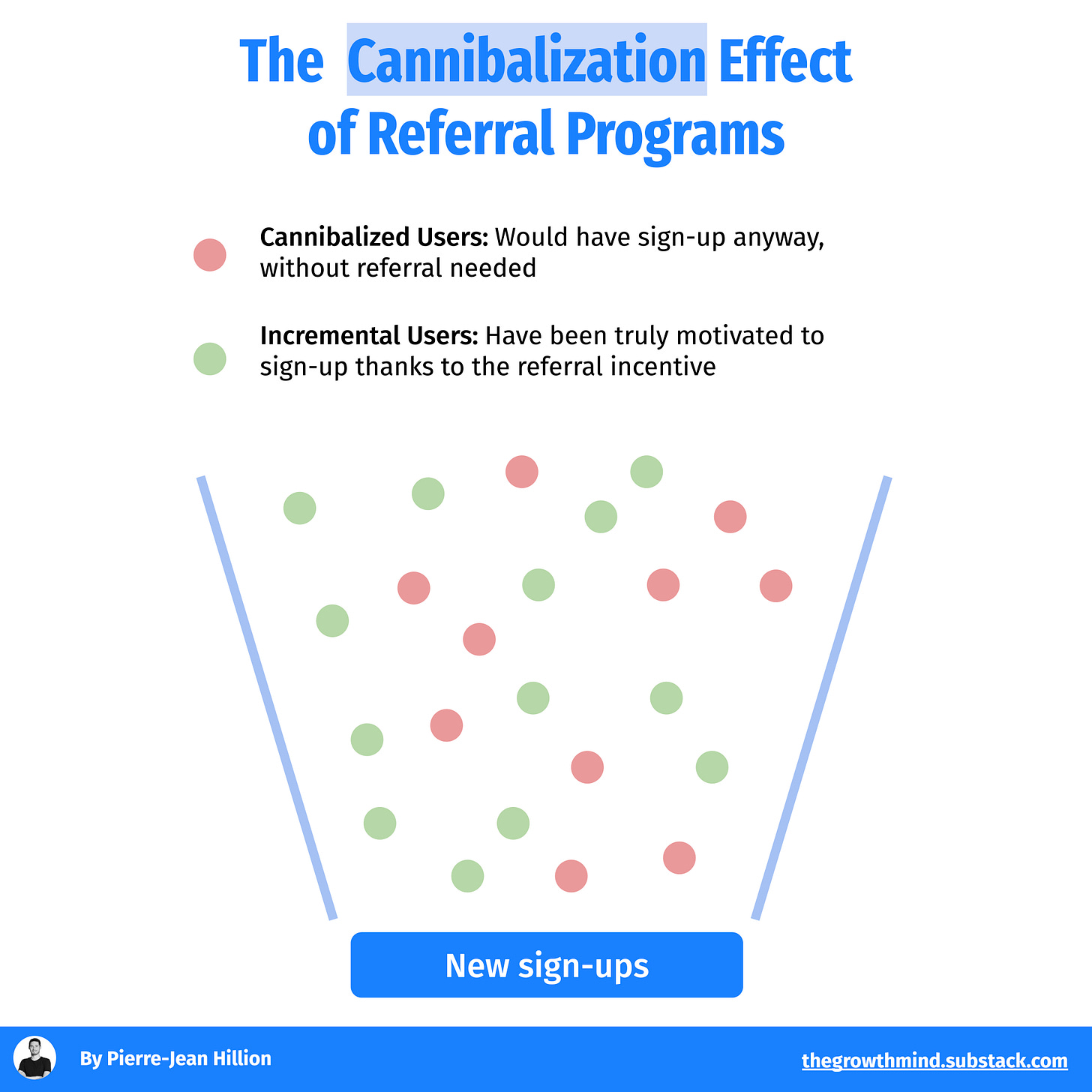10 steps for a great Referral Program 📣
Hey Growth folks 👋 Welcome to this new edition of The Growth Mind!
Today, we deep-dive into the 10 steps for a great referral program 🚀
The principle of Referral Programs is simple: you capitalize on your customer base to acquire new ones, by incentivizing people who do referrals. In the tech industry, companies like Dropbox or PayPal have been pioneers of it.
But, while it seems something relatively easy to set up, there are a few best practices to respect if you want to build an efficient and viable referral program.
1# Define the right incentive type
The first brick of a great referral program is the type of incentive you provide. The main challenge here is to provide an appealing incentive for your customers, so they’re motivated to refer friends & relatives.
There are two types of incentives:
💵 Monetary incentives: cash, discounts or gift cards
The advantage of monetary incentives is that they are easily quantifiable and motivate people to take immediate action.
The downside is that it can motivate people to do the referral only for money, leading to the acquisition of bad-quality users with a poor LTV, or even fraud.
🏆 Non-monetary incentives: product-related benefits, experiences, recognition
The advantage of those incentives is that they are generally correlated to the core product experience, so people doing referrals are people who want more of your product, encouraging engagement. It’s also less costly generally.
The downside is that they can be less attractive than monetary incentives, leading to fewer referrals.
➜ Choosing between both depends on your product, audience and marketing goals. For short-term results - focus on volumes, monetary incentives tend to work better. For a longer-term approach - focusing on retention and LTV, using non-monetary incentives is generally more suited.
2# Incentivize both the referee and referrer
The best referral programs use double-sided incentives.
Incentivizing both the referrer and the referee ensures you motivate both:
Your current customers to do referrals
New users to sign-up
It’s recommended to have the same incentive type, but the amount of the incentive can vary between the referrer and the referee.
Uber uses a double-sided incentive for its referral program:
3# Use Tiered Rewards/Gamification
Gamification tactics like tiered rewards, rankings, and leaderboards are a great way to motivate your customers to make several referrals.
The principle of tiered rewards is to offer a different amount of incentive, or type of incentives, depending on the number of referrals made. The more referrals, the better the reward.
A famous example of Tiered Rewards is the Morning Brew newsletter Referral Program, which has driven (as of October 2020) 35% of their +2.4M subscribers:
This type of tactic will help to create more engagement around your referral program, by making people see referrals as a game or a competition.
4# Make the Incentive amounts aligned with your unit economics
Having an appealing referral program is great, but making sure it’s economically viable is better.
The advantage of referral programs is that you have full control of your CAC: it’s the amount of incentives you provide.
To estimate the viability of your referral program, using the LTV/CAC formula is a great technic.
LTV (Lifetime Value): The total revenue you generate from a customer during his entire lifetime. If you generate 10$ per month on average, and your retention is 6 months, then your LTV is 60$.
CAC (Customer Acquisition Cost): The amount you spend to acquire a new customer. In our case, it’s the cost associated with the referral program divided by the number of customers acquired through the program.
LTV/CAC: In the context of a referral program, a ratio of 3:1 or higher is generally considered healthy. But it depends on your objectives and the industry. In any case, to make sure the program is viable, the ratio should always be > 1:1.
The challenge is to have a good balance between profitability for your company and an appealing incentive amount for your customers.
5# Use a tracked link or referral code to properly track referred users
To track the number of sign-ups attributed to a referral program, and properly incentivize your customers, you can use:
Referral Codes: During their onboarding, new users should add their referral code in a dedicated field.
Tracked Links: Links that enable you to track who’s coming from a referral.
→ Referral Code is generally the better option, as tracked links can be harder to manage due to tracking restrictions and less transparent for the user.
6# Make the program easily visible and promote it
Having a referral program is good, but if no one sees it, it’s useless. It’s then capital to promote your program both in and outside your product.
📱In-product: At least a dedicated tab, in the account settings, should be present. But not everyone goes regularly to account settings or sub-menus. So you can also choose to make your program even more visible by sometimes adding banners/mentions on screens where a vast majority of your users go.
💌 Outside product: Promoting regularly your program through CRM campaigns (emails, push notifications, inbox messages) is a great way to make it visible. You can decide to segment those communications to a certain type of customers (eg. the most experienced ones) or make it a dedicated step of an Activation CRM sequence for example.
Deliveroo is promoting its Referral Program on the first screen you see when opening the app, to maximize exposure:
7# Make the sharing action easy
Once your customers are aware that your referral program exists, making the sharing action easy by removing unnecessary friction will help your program perform.
The best practice is to make your customers able to generate a pre-populated message/WhatsApp describing the program, with the referral code associated.
See below the example of Trade Republic, a trading app 👇
It’s a seamless 2-clicks process, removing the pain of writing anything by yourself.
8# Measure incremental impact, to avoid cannibalization
One of the risks of referral programs is to incentivize users who would have signed up organically anyways, without the help of the referral program. We call this effect cannibalization.
Let’s be clear: there will always be some cannibalization with a referral program. That’s why making the program profitable, with a positive LTV/CAC ratio, is key.
But you should also make sure the program is incrementally bringing new users; meaning people who would NOT have signed up without the program.
There are several measurement methods you can explore:
Before/After Analysis: Compare key metrics (such as new user sign-ups, engagement rates, and overall revenue) before the launch of the referral program and after it has been in place for a specified period.
Control Group Testing: Create a control group of customers who are not exposed to the referral program and compare their behavior with those who are.
Econometric Modeling: Econometric models isolate the effect of the referral program from other factors that could influence customer acquisition, such as marketing activities, seasonal trends, and economic conditions.
To implement these methods and ensure a proper measurement of incremental performance, I would suggest collaborating with Data scientists/analysts in your company, as those methods can be quite complex to manage and go far beyond my domain of competency.
9# Pay attention to bad-quality users and fraudsters
The second risk of a referral program is to acquire bad quality users, who are only there for the reward and do not fit in your ICP.
Worst, some fraudsters can even take advantage of a referral program to create a money-making machine.
To counter those side effects, you can:
Analyze the Engagement, Retention, and LTV of referred customers: Ideally, they should have the same engagement as non-referred customers, meaning they properly fit your target audience.
Make sure the incentive is unlocked after taking key actions in the product: such as making a purchase, subscribing to a paid plan, or using the product for a certain period. This minimizes the risk of attracting users who are only interested in the reward.
Implement Fraud Detection: Use technology to monitor fraudulent activity, such as users creating multiple accounts to claim referral bonuses. Setting up systems to detect and prevent this kind of abuse is crucial for the long-term health of the program.
10# Implement a continuous testing process
Finally, as for every growth tactic, regularly testing new things to improve your Referral Program efficiency should be a continuous process.
You can experiment on:
The way you promote your referral program: communications, messaging, process.
The incentive type: monetary vs non-monetary.
The incentive amount: for the referrer and the referee.
Those experiments will ensure you find the best formula but also allow you to refresh your program scheme and avoid fatigue from your customers who already know the referral program.










Great post. I wish more startups would integrate their engineering and marketing teams. I believe this is an untapped opportunity in most startups that will drive top-of-funnel growth. When these teams collaborate to create valuable tools and resources for their target audience, growth happens—and at a fraction of the cost needed for paid media. HubSpot's Website Grader is a perfect example.